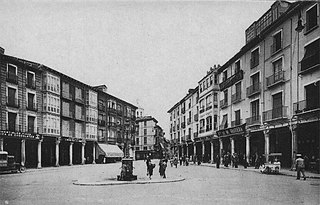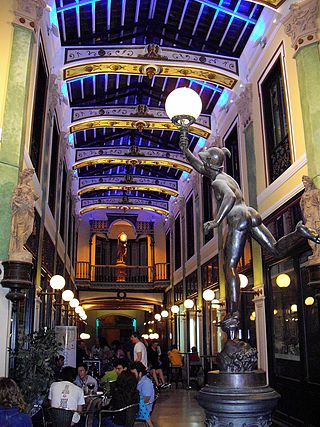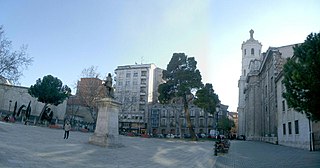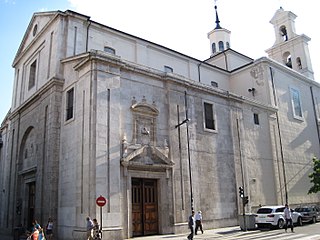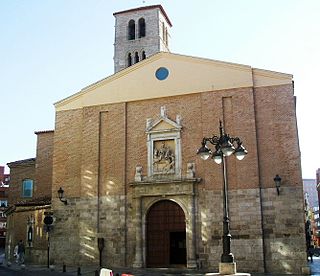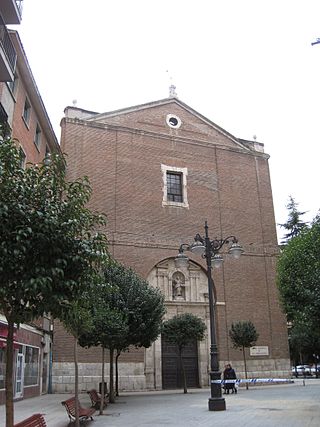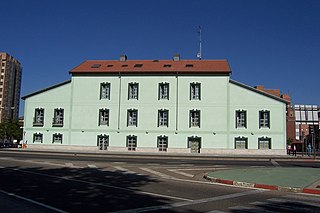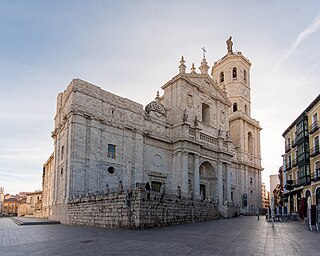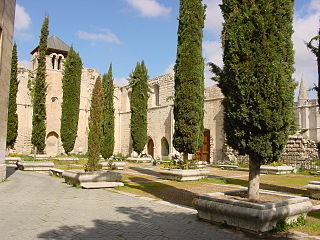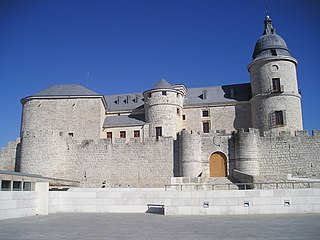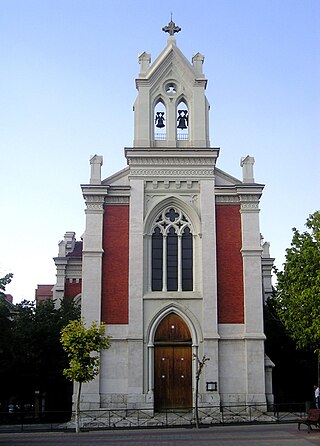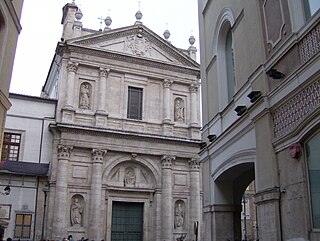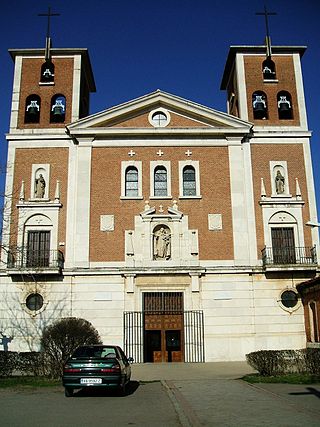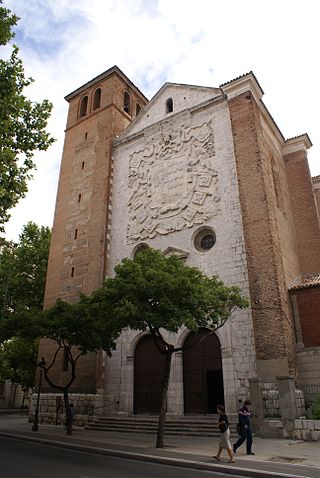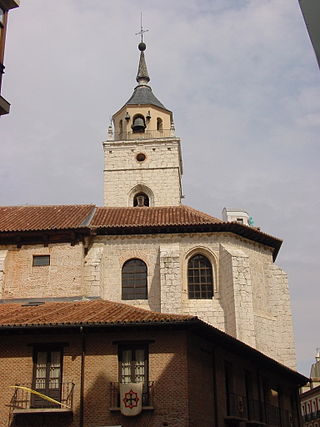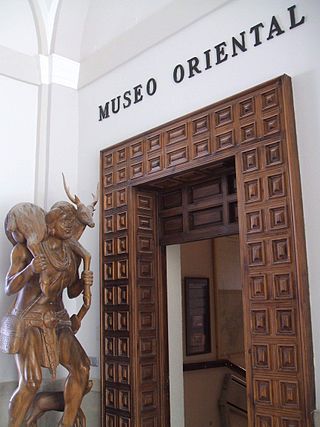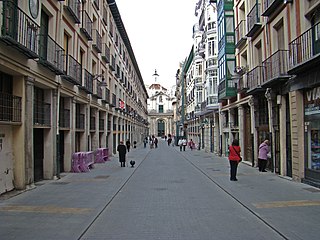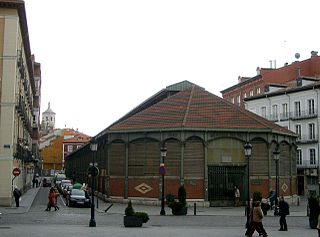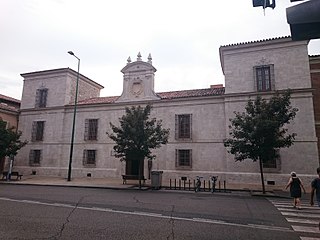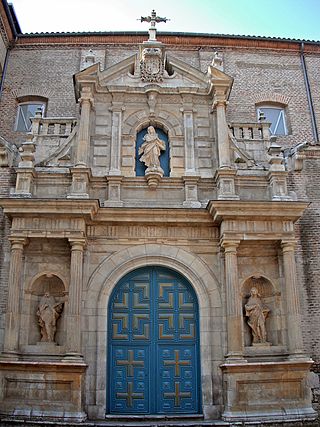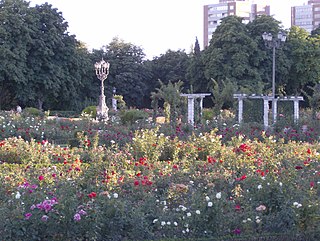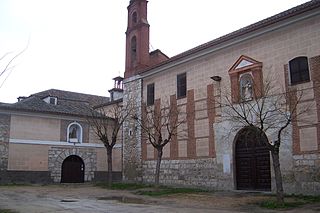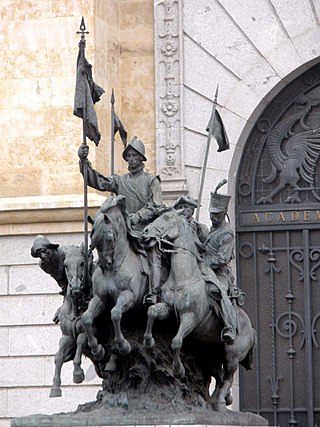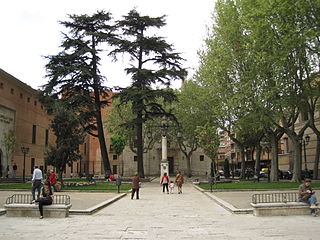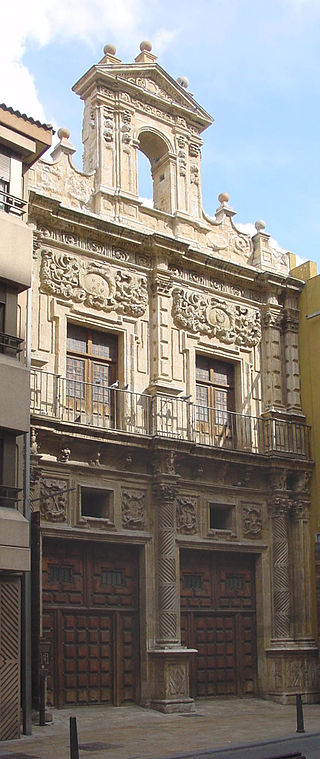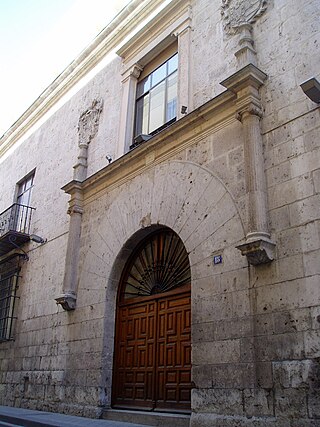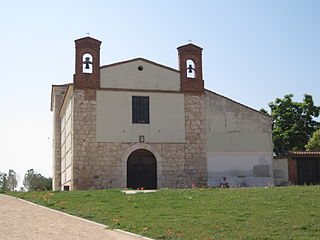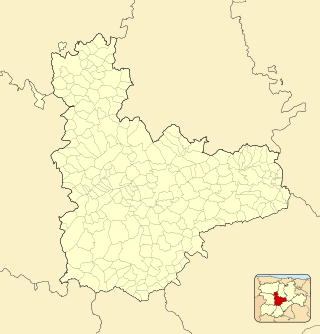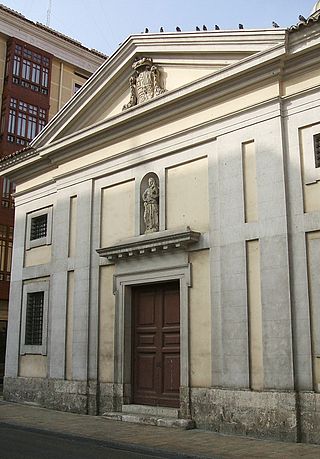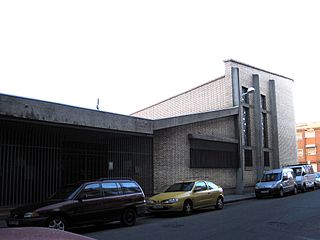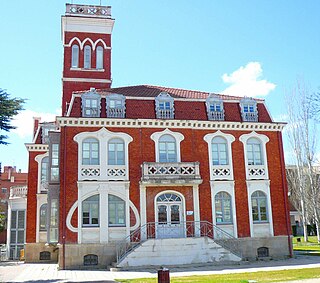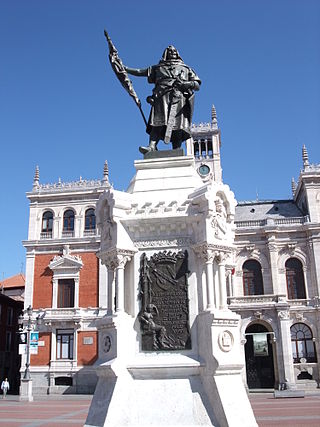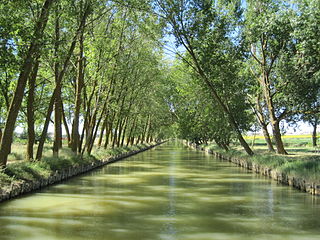51 Sights in Valladolid, Spain (with Map and Images)
Legend
Premium Sights
Book tickets, guided tours and activities in Valladolid.
Guided Free Walking Tours
Book free guided walking tours in Valladolid.
Welcome to your journey through the most beautiful sights in Valladolid, Spain! Whether you want to discover the city's historical treasures or experience its modern highlights, you'll find everything your heart desires here. Be inspired by our selection and plan your unforgettable adventure in Valladolid. Dive into the diversity of this fascinating city and discover everything it has to offer.
Sightseeing Tours in ValladolidActivities in ValladolidThe Old Coso, today Plaza del Viejo Coso or Plaza del Coso, was the first bullring in Valladolid, built in the nineteenth century. Until that date, bullfighting festivities were held in the Plaza Mayor and areas surrounding the Puerta del Campo or in the Plaza Vieja or Plaza de San Pablo, in which wooden tribunes were placed for spectators, imitating models such as the one in the Plaza del Coso de Peñafiel.
The Golden Fountain was a public fountain in the city of Valladolid, Spain. It was the eponym of the square that bears the same name located in a place near the Plaza Mayor: the Plaza de Fuente Dorada. It was built in 1618 under the direction of Diego de Praves, master architect of works of the City Council and was supplied by the water flow of Argales. This fountain had many changes and remodeling over the centuries. Nothing remains of the primitive fountain, only some description such as the one given by Ventura Pérez in his Diario de Valladolid. The last structural change was in 1998 under the direction of the architect Fernando González Poncio; this architect not only planned the square but also built a new fountain with the title of "Allegory of the Guilds".
Pasaje Gutiérrez is a covered shopping arcade in the city of Valladolid inaugurated in 1886, located between Fray Luis de León and Castelar streets. This type of gallery arose in Paris as a result of the industrial revolution of the nineteenth century. They were conceived as passageways that served as communication between busy streets and intended to expand space for commerce. In Spain, the Gutiérrez passage, together with the Lodares passage in Albacete and the Ciclón passage in Zaragoza, are the only 3 remaining examples of this type of gallery.
The Plaza de la Universidad is one of the main squares in the city center of Valladolid, in the autonomous community of Castilla y León, Spain. Historically known as Plaza de Santa María, it was renamed at the beginning of the twentieth century because it is the façade of the university, now the Faculty of Law of the University of Valladolid.
5. Museo de Escultura Colegio de San Gregorio
The Colegio de San Gregorio is an Isabelline style building located in the city of Valladolid, in Castile and León, Spain, it was formerly a college and now is housing the Museo Nacional de Escultura museum. This building is one of the best examples of the architectural style known as Isabelline, which is the characteristic architectural style of the Crown of Castile region during the Catholic Monarchs' reign.
6. Iglesia del Santuario
The Minor Basilica and National Shrine of the Great Promise is a Catholic temple of expiatory character consecrated to the cult of the Sacred Heart of Jesus located in the city of Valladolid, community of Castilla y León, Spain. Its architecture is baroque in style and its variegated interior furniture responds to different styles and periods.
7. Iglesia de San Martín
The Church of San Martín and San Benito el Viejo is a Roman Catholic parish church located in the center of the city of Valladolid, in the province of the same name in the Community of Castile and León, Spain. An Asset of Cultural Interest (BIC), it has been a National Historic-Artistic Monument since 1993.
8. Iglesia de San Miguel y San Julián
The church of San Miguel and San Julián is the temple of the old Professed House of the Society of Jesus in the city of Valladolid (Spain). When the Jesuits were expelled in 1767, by order of Charles III of Spain, the building was used as the parish church of San Miguel, San Julián and Santa Basilisa in 1775.
Wikipedia: Iglesia de San Miguel y San Julián (Valladolid) (ES)
9. Iglesia de San Andrés
The Church of San Andrés de Valladolid is a Roman Catholic parish church located in the Diocese of Valladolid. Located in the Plaza de San Andrés, near the commercial Calle Mantería, it is one of the largest churches in the city. It is the reference of the neighborhood that surrounds it, San Andrés-Caño Argales, which takes the same name as the church. In this church is located the Royal Penitential Brotherhood of the Holy Christ Stripped, Christ on the Way to Calvary and Our Lady of Bitterness.
10. Antigua Fábrica de harinas La Perla
The La Perla flour factory was an old flour mill in Valladolid built between 1856 and 1857 that worked thanks to the hydraulic energy provided by the Canal de Castilla. The building was declared an Asset of Cultural Interest in 1991 and the factory closed in 2006.
11. Catedral de Nuestra Señora de la Asunción
The Cathedral of Our Lady of the Holy Assumption, better known as Valladolid Cathedral, is a Catholic church in Valladolid, Spain. The main layout was designed by Juan de Herrera in a Renaissance-style.
12. Colegiata
The collegiate church of Santa María de Valladolid was the main church of the city between the eleventh and sixteenth centuries. Its construction is due to the repopulator of Valladolid Pedro Ansúrez in the eleventh century. Today only a few ruins and a few chapels are preserved, located near the Church of Santa María La Antigua and next to the unfinished cathedral of Valladolid.
Wikipedia: Colegiata de Santa María la Mayor (Valladolid) (ES)
13. Iglesia de San Pablo
The Iglesia conventual de San Pablo or San Pablo de Valladolid is a church and former Dominican convent, of Isabelline style, in the city of Valladolid, in Castile and León, Spain. The church was commissioned by Cardinal Juan de Torquemada between 1445 and 1468. It was subsequently extended and refurbished until 1616. Kings Philip II and Philip IV of Spain were baptized in the church, and it was visited by Napoleon. It is one of the buildings considered most emblematic of the city.
14. Museo Arqueológico Provincial
The Museum of Valladolid was created as the Provincial Museum of Antiquities in 1879. Since the late 1960s, its headquarters have been located in the Palacio de Fabio Nelli in Valladolid, autonomous community of Castilla y León, Spain. The museum's collection is divided into two sections: Archaeology and Fine Arts.
15. Parque de las Moreras
Las Moreras beach is a river beach located in the city of Valladolid. It is located parallel to the Paseo de Isabel la Católica, bordering the Francisco Sabadell Rose Garden and part of the left bank of the Pisuerga River. The beach dates back to the 1950s.
16. Teatro Zorrilla
The Zorrilla Theatre in Valladolid, the work of the architect Joaquín Ruiz Sierra, is a theatre, located in the Plaza Mayor in the same space where the disappeared Convent of San Francisco was located. Its main façade is not individualized and is concealed, in the square, within the buildings uniformed by the color and architectural appearance of housing. Access is through the arcades and its rear façade overlooks Calle Constitución.
17. Simancas
Simancas is a town and municipality of central Spain, located in the province of Valladolid, part of the autonomous community of Castile and León. It is situated approximately 10 km southwest of the provincial capital Valladolid, on the road to Zamora and the right bank of the river Pisuerga.
18. Iglesia de la Pilarica
The church of Nuestra Señora del Pilar, located in the Spanish city of Valladolid and popularly known as La Pilarica, is a parish church of Catholic worship. Built at the beginning of the 20th century, it is considered a good example of the neo-Gothic architecture of Valladolid and its province.
Wikipedia: Iglesia de Nuestra Señora del Pilar (Valladolid) (ES)
19. Iglesia de Nuestra Señora de las Angustias
The Penitential Church of Nuestra Señora de las Angustias is a church in Valladolid located in the center of the city in front of the Calderón Theater and near the Church of Santa María La Antigua. The church is owned and held by the Illustrious Penitential Brotherhood of Our Lady of Sorrows, one of the oldest brotherhoods of Holy Week in Valladolid.
Wikipedia: Iglesia de Nuestra Señora de las Angustias (Valladolid) (ES)
20. Iglesia de Nuestra Señora del Carmen Extramuros
The sanctuary of Nuestra Señora del Carmen Extramuros is a Catholic temple located on the outskirts of the city of Valladolid. Basically Baroque in style, it was built between the sixteenth and eighteenth centuries as part of the old convent of Carmen Descalzo. Today it hosts regular worship and a deep-rooted Marian devotion.
Wikipedia: Iglesia de Nuestra Señora del Carmen Extramuros (Valladolid) (ES), Website
21. Iglesia de Santa María Magdalena
The Church of Santa María Magdalena is a Roman Catholic parish church in Valladolid. It is located on Calle Colón, in front of the Columbus House Museum and next to the Faculty of Medicine of the University of Valladolid and the Monastery of Las Huelgas Reales.
Wikipedia: Iglesia de Santa María Magdalena (Valladolid) (ES)
22. Iglesia de Santiago Apóstol
The church of Santiago Apóstol is a Roman Catholic parish church in the city of Valladolid. Located on the Valladolid street of the same name, it was built in different stages and styles between the fifteenth and seventeenth centuries. It is the headquarters of the Brotherhood of the Seven Words.
23. Casa Museo de Cervantes

The Cervantes' House is a museum in Valladolid, Spain, devoted to Miguel de Cervantes. The museum is located in the house that was Cervantes's home. It is one of the National Museums of Spain and it is attached to the Ministry of Culture.
24. Museo Oriental
The Oriental Museum of Valladolid is a museum located inside the convent of the Augustinian Filipinos in the city of Valladolid (Spain), and is considered by some sources to be the best of its kind in Spain.
25. Calle de la Platería
The historic complex of Calle de la Platería, together with the Plaza del Ochavo, is part of the mercantile complex of the old Market Square of Valladolid and the artisans' quarter that had to be rebuilt after the fire of 1561.
26. Mercado del Val
The Val market is a market in Valladolid (Spain). It is an example of iron architecture. It stands in the Plaça del Val, next to the church of San Benito el Real. It is the oldest market that is preserved in the city, after the demolition of those of El Campillo and Portugalete, the three built during the mayoralty of Miguel Íscar Juárez. It is inspired by Les Halles in Paris, and was built between 1878 and 1882, with a project by the architect Joaquín Ruiz Sierra.
27. Cerro de San Cristóbal
The Cerro de San Cristóbal is a witness hill located at the southern end of the Spanish municipality of Valladolid, in the autonomous community of Castilla y León. It is located 5 km from its urban center and rises to an altitude of 843 m a.s.l. From it you can see a large extension of the city of Valladolid and its surroundings, and to the north you can make out the castle of Fuensaldaña.
28. Cárcel de la Chancillería
The Chancery Prison of Valladolid is a building designed in classicist style by the architect Nicolás Bueno and carried out by Felipe Berrojo, Juan de Median Argüelles, Juan Tejedor Lozano, and Pedro de Biermo, during the years 1675 and 1679. It is located in the municipality of Valladolid, in the Province of Valladolid, in the autonomous community of Castilla y León, Spain, where the Reina Sofía Library is currently located. It is located in the center of the city along with the Palacio de los Vivero, the University Clinical Hospital of Valladolid, the Church of San Pedro Apóstol and the Convent of the Descalzas Reales. It was the prison for prisoners whose cases were processed by the Court of the Royal Audience. It was for years a prison in Valladolid until 1935, when what is now the "Esgueva" Civic Center was inaugurated.
29. Museo de Escultura Casa del Sol
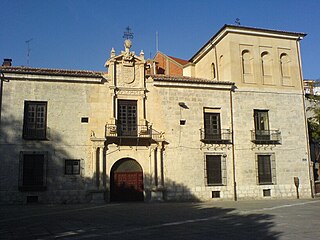
The Palace of the Count of Gondomar, better known as the House of the Sun, is a palace in the city of Valladolid, Castile and León, Spain. Since 2012 it has housed the National Museum of Artistic Reproductions.
30. Convento de Santa Isabel

The convent of Santa Isabel is a Catholic temple located in the center of Valladolid. The convent has been restored, and the complete renovation of the church was completed in April 2006. Some spaces have been adapted to house the Museum of Santa Isabel, enjoying the atmosphere of the Franciscan cloister and contemplating pieces of remarkable artistic value in its rooms.
31. Iglesia de San Felipe Neri
The church of San Felipe Neri is a Roman Catholic church in the city of Valladolid, located on the street of the same name. It is not a parish church but was conceived as an oratory for the newly created congregation of San Felipe Neri of secular priests.
32. Museo de Escultura Iglesia de San Benito el Viejo
The Church of San Benito el Viejo was a church located in Valladolid, Castile and León, Spain, constituting the chapel of the palace of the Count of Gondomar or Casa del Sol. In 2012 it was rehabilitated and desacralized to integrate, together with the palace, within the complex of the National Museum of Sculpture, as it adjoins, being separated by a garden, with the school of San Gregorio, the main headquarters.
33. Sala de Exposiciones Iglesia de las Francesas
The Convent of the French is a Catholic temple located in the center of Valladolid since the fifteenth century. Currently only the cloister rehabilitated as a shopping center is preserved, and the church that today is the Municipal Exhibition Hall, all inside a block of flats built in the seventies of the twentieth century.
34. Fachada de la Universidad de Valladolid
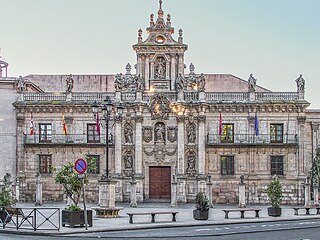
The façade of the University of Valladolid of Spain was built between 1716 and 1718 in the Baroque style. The architect Fray Pedro de la Visitacion supervised the construction. The façade was part of a project to enlarge the buildings of the university.
35. Rosaleda Francisco Sabadell
The Francisco Sabadell Rose Garden is one of the oldest gardens in Valladolid. It is located next to the left bank of the Pisuerga, extending along its route from the Poniente bridge to the Isabel la Católica bridge, bordering in turn with the Paseo de Isabel la Católica and the beach of Las Moreras. Its area is 35,738 m².
36. Convento de Santa Teresa
The Convent of La Concepción del Carmen, popularly known as the Convent of Santa Teresa, is a cloistered convent of Discalced Carmelite nuns located in the Spanish city of Valladolid, in the autonomous community of Castile and León, Spain.
Wikipedia: Convento de la Concepción del Carmen (Valladolid) (ES)
37. Monumento a los Cazadores de Alcántara
The monument to the hunters of Alcántara is located on the Paseo de Zorrilla de Valladolid, in front of the main door of the Valladolid Cavalry Academy building. The sculptural set is the work of Mariano Benlliure and was inaugurated on June 25, 1931.
38. Plaza de la Trinidad
The Plaza de la Trinidad is located northwest of the city of Valladolid (Spain), near the Pisuerga River. It belongs to the historic neighborhood of San Nicolás. The square is very wide and its southern flank is completely open to San Quirce street. It is home to three notable and important buildings in the history of Valladolid: the palace of the Counts of Benavente, the convent of San Quirce and the church of San Nicolás.
39. Sala de Exposiciones Iglesia de la Pasión
The Church of the Passion is a Catholic temple in the Churrigueresque Baroque style, its construction began in 1577, it was the first penitential church in Valladolid. It is currently an exhibition hall located in the centre of Valladolid. It was originally a church built to be the headquarters of the Penitential Confraternity of the Sacred Passion of Christ. The church was closed to religious worship in the 19th century. It was declared a National Monument on March 10, 1928.
40. Archivo Histórico Provincial
The Provincial Historical Archive of Valladolid is a document archive located in the town of Valladolid, Castile and León, Spain. It is located in the Palacio de los Vivero, which was previously the Royal Audience and Chancery of Valladolid between 1371 and 1834. The palace is also home to the Archive of the Royal Chancery of Valladolid.
41. Palacio de los Escudero - Herrera
The Escudero-Herrera Palace is a Renaissance building, built in the second quarter of the sixteenth century, located on Fray Luis de León Street in Valladolid, Spain. Since 1922 it has belonged to the Congregation of the Daughters of Jesus, as well as the palace of the Villagómez, acquired by the latter several years later and both being adjoining.
Wikipedia: Palacio de los Escudero-Herrera (Valladolid) (ES)
42. Ermita de San Isidro
The hermitage of San Isidro is a hermitage located in the city of Valladolid. It is the only one of all the hermitages that existed in Valladolid that is currently preserved. It is dedicated to San Isidro Labrador, patron saint of farmers. Between May 13 and 15 of each year a pilgrimage is held.
43. Fuente de los Colosos
Los Colossi is the name of a fountain in Valladolid, Spain; it is located in the Plaza de la Rinconada, approximately in the same space where its ancestor called the Fuente de la Rinconada was, of which not one stone was left when it was completely dismantled when the square was remodelled at the end of the nineteenth century. The difference between one and the other is that the Rinconada was a public or neighborhood fountain while Los Colosos was born as a decorative fountain. It was built in 1996 by the architect Fernando González Poncio with sculptures by Pedro Monje.
44. Iglesia de los Dominicos
The Apostolic College of the Dominican Fathers is located in the city of Valladolid and with its set of buildings, of a teaching and conventual nature, it is configured as one of the pillars of the renovation of religious architecture in Spain.
Wikipedia: Iglesia del Colegio Apostólico de los Padres Dominicos (ES)
45. Museo del Monasterio de San Joaquín y Santa Ana
The Museum of the Monastery of San Joaquín y Santa Ana is a museum of sacred art that is located in the church of the Royal Monastery of San Joaquín y Santa Ana in Valladolid, Spain. It includes valuable pieces of Spanish Baroque sculpture, while the church treasures three youthful canvases by Goya, the only paintings by the Aragonese painter preserved in Castilla y León.
Wikipedia: Museo del Monasterio de San Joaquín y Santa Ana (ES), Website
46. Monumento a Cristóbal Colón
The Monument to Columbus is an instance of public art in Valladolid, Spain. Located on the centre of the namesake Plaza de Colón, in the southeastern corner of the Campo Grande, the monument is dedicated to Christopher Columbus.
47. Iglesia de San Ignacio de Loyola
The church of San Ignacio de Loyola is a modern temple located in Valladolid. It is located in the neighborhood of Pajarillos. It was built and consecrated in 1972, at a time when the neighborhood around it was growing and expanding.
Wikipedia: Iglesia de San Ignacio de Loyola (Valladolid) (ES)
48. Casa Luelmo
Casa Luelmo is an eclectic-modernist building in Valladolid. Built at the beginning of the 20th century according to a design by the architect Antonio Ortiz de Urbina y Olasagasti, it was commissioned by the businessman Rufo Luelmo to be used as a family home in what was then the Minaya farm, a 45-hectare farm located on the outskirts of the city, intended for agricultural exploitation.
49. Convento de San Quirce y Santa Julita
The Convent of San Quirce y Santa Julita is a monastery located in Valladolid, Spain. Located in the Plaza de la Trinidad and occupied by Cistercian nuns, it is one of the oldest monasteries in the city. It is the headquarters of the Penitential Brotherhood of the Sacred Passion of Christ.
50. Estatua del Conde Ansúrez
The Monument to Count Ansúrez is an instance of public art in Valladolid, Spain. Located at the Plaza Mayor, it consists of a bronze statue of Count Pedro Ansúrez, founder of the town of Valladolid in the 11th century, topping off a stone pedestal with additional sculptural elements.
51. GR 89
The Canal de Castilla is one of the most important works of hydraulic engineering carried out between the mid-eighteenth century and the first third of the nineteenth century in Spain. It runs through part of the provinces of Burgos, Palencia and Valladolid, in the autonomous community of Castilla y León, and was built to facilitate the transport of wheat from Castile to the northern ports and from there to other markets. However, with the arrival of the railway, it became obsolete.
Share
How likely are you to recommend us?
Disclaimer Please be aware of your surroundings and do not enter private property. We are not liable for any damages that occur during the tours.

